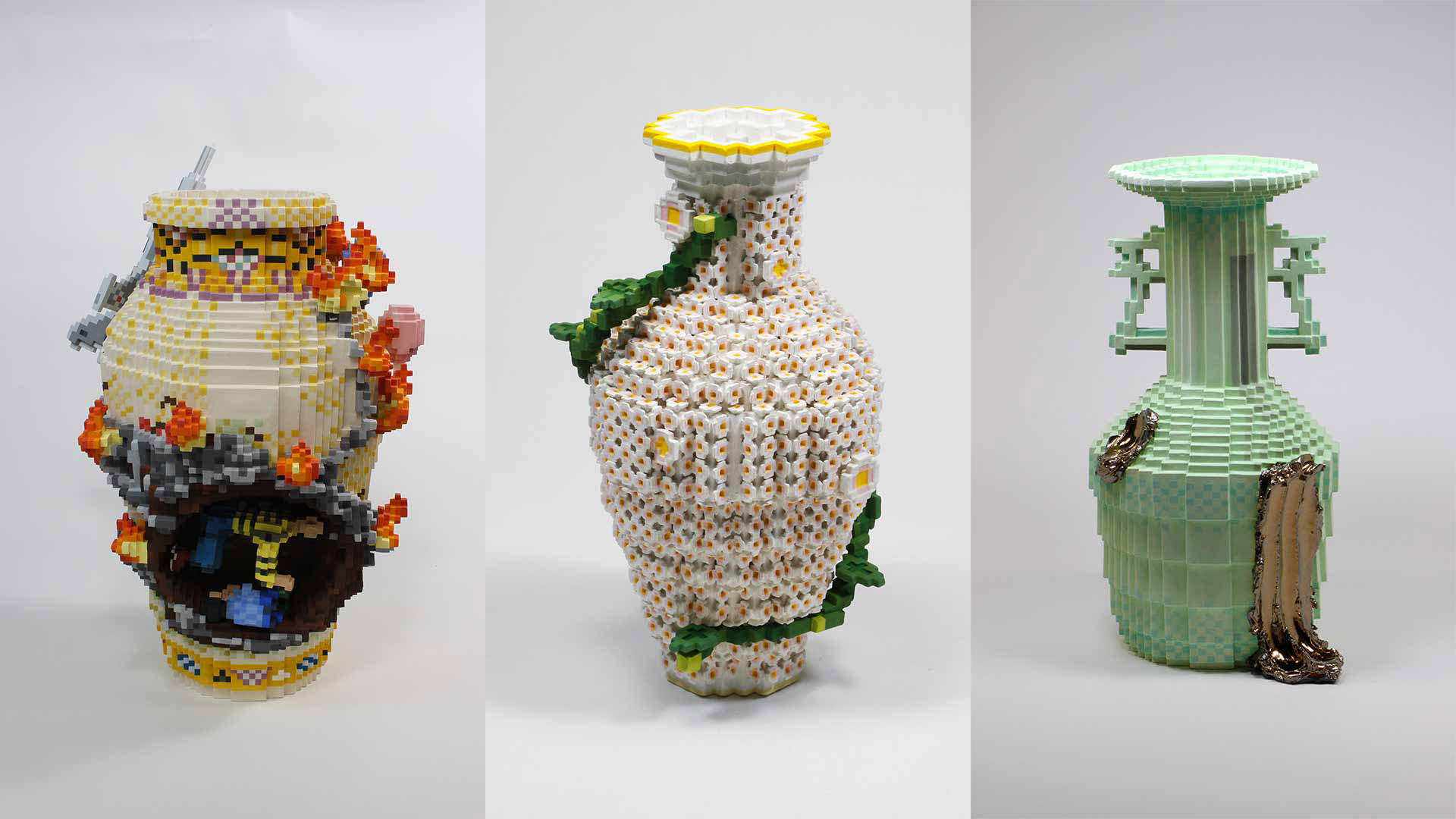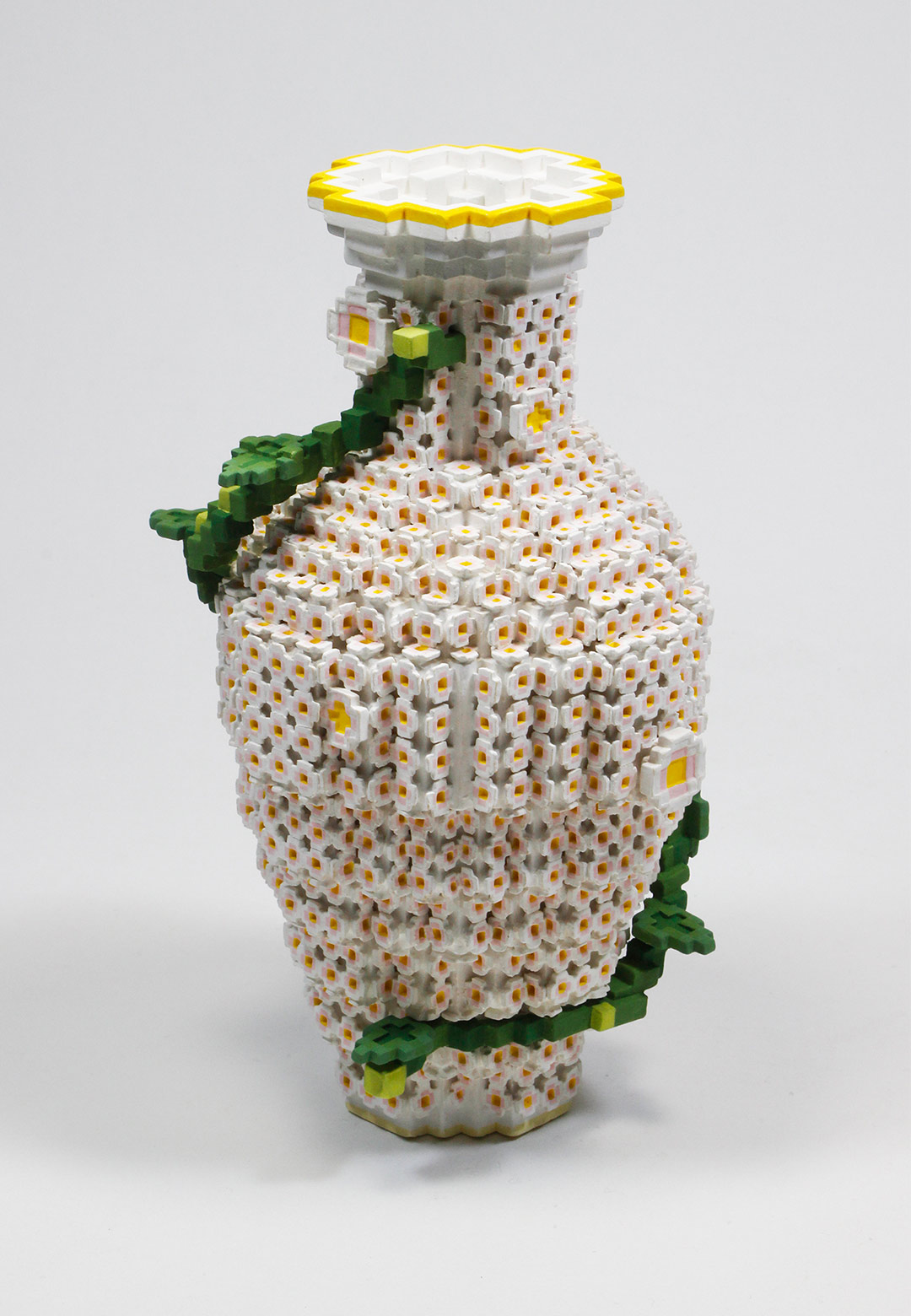With the creative convergence of technology and design, a new era of possibilities has ushered in, where the lines distinguishing the real and the digital worlds are becoming increasingly and interestingly blurred. Through the use of computer graphics, augmented reality, and virtual reality, designers are able to incorporate digital aspects into the real world smoothly, improving user experiences and changing the way we interact with it.
Japanese artist Toshiya Masuda joyously intertwines the virtual world with the real one, by transforming everyday objects into pixelated ceramic sculptures resembling video game graphics from the 1980s, or computer images of very low resolution. By combining unexpected digital elements with tangible objects, Masuda's ceramic works attempt to make people reflect on, and challenge their preconceptions about the potential of ceramic as a material medium.
The artist elaborates on the idea behind the sculptural art: “As people get older, they make decisions based on their experiences, and the knowledge they have acquired. They control their emotions based on their previous knowledge and precedents, (as) many things become common knowledge without their knowledge. In this sense, when people hear the word 'ceramics,' they imagine 'vessels,' the texture and colour of clay and glaze, and a real sense of reality that they can actually touch; while when they hear the word 'computer graphics,' many people imagine digital images on monitors such as in video games, which they cannot actually touch.”
Evoking nostalgic imagery from bygone periods of playing low-quality video games, Masuda's carved clay product designs delightfully range from rollerblades and sneakers to alcohol bottles and boom boxes. Ceramic blocks that have been chiselled to mimic stacks of bricks, gradually take on the appearance of commonplace objects, with their frequently hazy and indistinct aesthetics. Despite their seemingly ‘low-resolution’ appearance, Masuda's ceramic art has a variety of small-scale extrusions and delicate details that demand attention. “Once the motif to be created has been decided, a cross-sectional drawing is made by hand on a sheet of graph paper as if it were a CT scan of a circle, and the shape of the pattern is cut out by stretching the clay to a thickness of about one cm and laminating it together. The rough shape is then scraped off little by little with a knife or spatula to form the shape as imagined,” the product designer explains his creative process.
The sculpture artist crafts whimsical objects that stray away from the traditional methods of ceramic production. In order to prepare the ceramic artwork for lamination and glueing together, their shapes are carved out of the clay and stretched onto a board. After curing and ungluing from the base, the excess corners of these glued objects are removed using a knife or a spatula to shape them. Masuda then colours the unglazed piece to give it a base palette, before firing the sculpture without glaze. He utilises AMACO velvet underglaze paint for colour and Japanese potter's clay for his ceramics.
At the intersectant space of nostalgia yet youth, the pixelated ceramic sculptures by the Japan-based designer recalls an era filled with sentiments of pure joy as well as melancholy. He aims to leave behind an impression of ‘his time'—“...for me, it is important that the creation of the work is an expression of the times. This is because I believe that it is proof that I was alive during this time, while making it easier to create a relationship with the viewer,” the ceramic artist relays.
Masuda's pixelated ceramic sculptures, with their distinctive fusion of traditional craftsmanship with joyful digital aesthetics, provide an intriguing look into the development of art and design in the modern era. His creative approach emphasises the importance of art as a mirror of our times, simultaneously highlighting our relationship with time as an intersectional motif.






 Sign in with email
Sign in with email










What do you think?